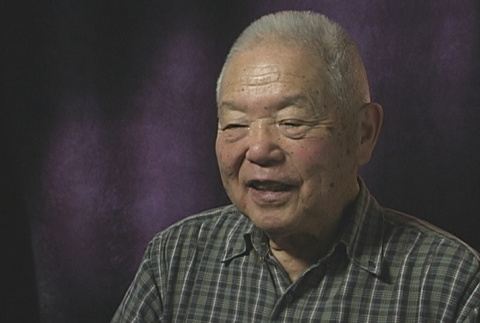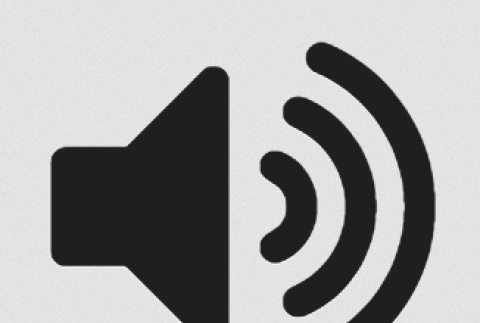206 items
206 items

vh
Hideo Hoshide Interview II (ddr-densho-1000-185)
Nisei male. Born September 25, 1917, in Tacoma, Washington. Grew up in Tacoma except for living in Japan for several years at age four. Attended the University of Washington in Seattle, majoring in Political Science, Far Eastern Studies, with a minor in journalism. Prior to World War II, worked as sports editor for community newspaper, The …

Narrator Hideo Hoshide
Nisei male. Born September 25, 1917, in Tacoma, Washington. Grew up in Tacoma except for living in Japan for several years at age four. Attended the University of Washington in Seattle, majoring in Political Science, Far Eastern Studies, with a minor in journalism. Prior to World War II, worked as sports editor for community newspaper, The …
![Letter from Masao Okine to Mr. and Mrs. S. Okine, May 19, 1946 [in Japanese] (ddr-csujad-5-186)](https://ddr.densho.org/media/cache/c7/f6/c7f6043b2abd2a79b6dad27d9727bbba.jpg)
doc
Letter from Masao Okine to Mr. and Mrs. S. Okine, May 19, 1946 [in Japanese] (ddr-csujad-5-186)
A letter from Masao Okine to his parents, Seiichi and Tomeyo Okine. He writes from Japan where he is stationed as a Nisei solder. The letter is mailed via San Francisco by the U. S. Army Postal Service. In the letter, he informs that he has received letters from his sister, Hatsuno, his wife, Ayame, and …
![Letter from Masao Okine to Mr. and Mrs. Okine, June 10, 1946 [in Japanese] (ddr-csujad-5-148)](https://ddr.densho.org/media/cache/15/db/15db368ca1d063785f2e40e779af4938.jpg)
doc
Letter from Masao Okine to Mr. and Mrs. Okine, June 10, 1946 [in Japanese] (ddr-csujad-5-148)
A letter from Masao Okine to his parents, Seiichi and Tomeyo Okine. Masao Okine writes from Japan where he is stationed as a US Army soldier. This letter is mailed via San Francisco by the U.S. Army Postal Service. The letter includes updates, informing of the arrival of his parents' four letters written on May 20, …

Narrator Matsuko Hayashi
Born in 1921 in Parlier in Fresno County, California, Matsuko Hayashi (pseudonym) grew up as the second oldest of the eight children of a first-generation immigrant who had come to the United States as a sixteen years old, and his wife who had come as a "picture bride." They raised grapes on three farms that Matsuko's …

vh
Matsuko Hayashi Interview (ddr-densho-1021-4)
Born in 1921 in Parlier in Fresno County, California, Matsuko Hayashi (pseudonym) grew up as the second oldest of the eight children of a first-generation immigrant who had come to the United States as a sixteen years old, and his wife who had come as a "picture bride." They raised grapes on three farms that Matsuko's …


![Letter from Masao Okine to Mr. and Mrs. S. Okine, May 19, 1946 [in Japanese] (ddr-csujad-5-186)](https://ddr.densho.org/media/cache/bf/6b/bf6b70f0a0ba7492f272f0669abe4fd0.jpg)
![Letter from Masao Okine to Mr. and Mrs. Okine, June 10, 1946 [in Japanese] (ddr-csujad-5-148)](https://ddr.densho.org/media/cache/6b/22/6b220080e19c11e1ebd7b82ccdfda933.jpg)

